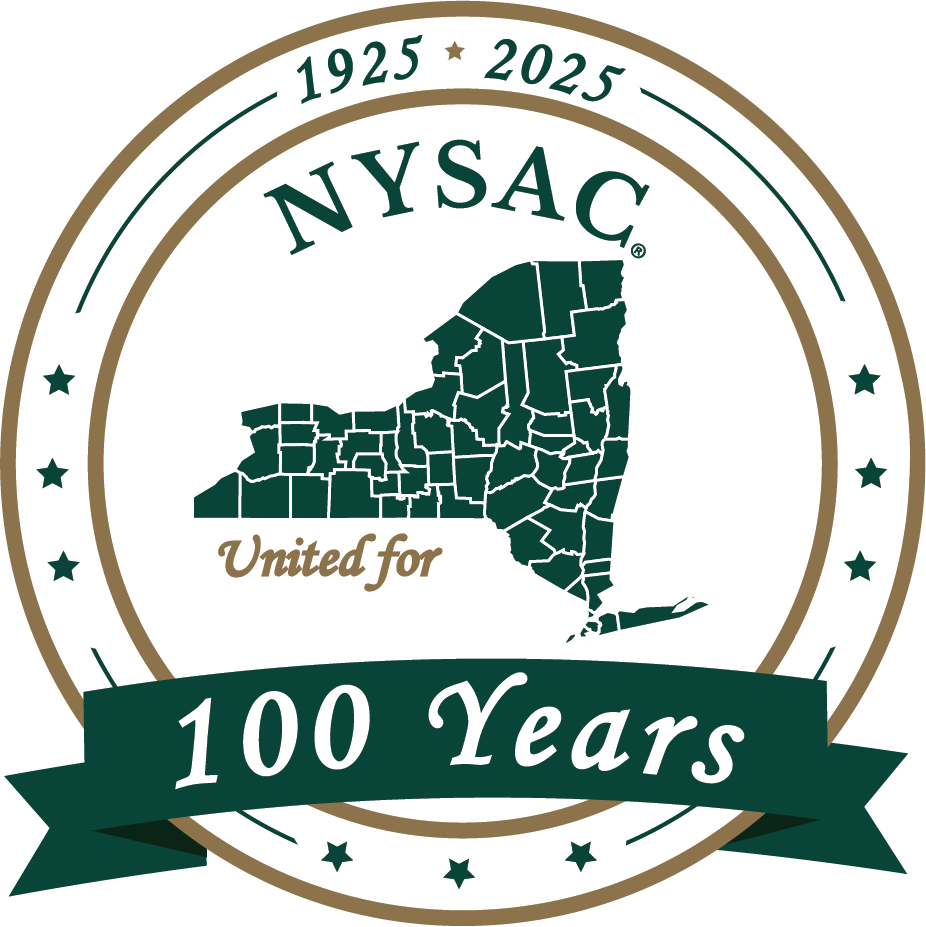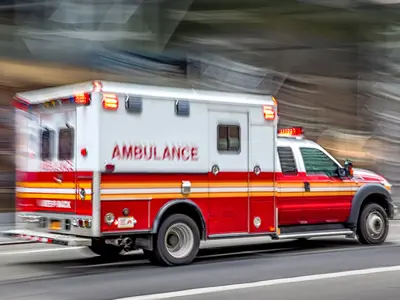NYSAC Fights for Fixes to EMS
By Joe Mahoney
Contributing Author
New York's web of platforms providing emergency medical services to people with urgent health needs is under serious stress.
High turnover rates of ambulance crew staffers is a growing concern as is a funding gap that has steadily worsened as reimbursement from Medicaid and Medicare has failed to keep pace with the rising cost of delivering the services.
To make the increasingly dire situation even more acute, emergency medical services under current state law are not considered "essential.".
"EMS is in a bad state of crisis right now," said Michael McEvoy, chairman of the New York State EMS Council and the Saratoga County EMS coordinator. "There are ambulance services going out of business across the state almost every week. Someone needs to take the bull by the horns"
Optimism is now high among EMS advocates that Gov. Kathy Hochul will get her ambitious agenda for EMS over the goal line in state budget negotiations this year.
The New York State Association of Counties has been in the thick of EMS discussions at the state Capitol, with leaders facilitating support from private, municipal and not-for-profit ambulance services from all regions of the state.
A package of measures put forward by Hochul in her budget presentation "is the most comprehensive, impactful and sincere EMS proposal I have seen in my career," said Ryan Gregoire, director of legislative affairs for NYSAC.
Hochul's agenda includes two proposals that mirror recommendations advanced by NYSAC, One would establish EMS as an essential service and allow counties and other municipalities, at local option, to provide joint taxing districts to generate the revenue needed by the services. That proposal mirrors legislation framed by Sen. Shelley Mayer of White Plains and Assembly Member Steve Otis of Port Chester. Their bill is a key component of the NYSAC EMS agenda this year.
Hochul has also signaled her support for another NYSAC objective -- allowing EMS providers to be reimbursed when their staffers provide treatment to a patient following a call for service but don't end up transporting the patient to a hospital.
Executives at EMS providers say the current system has contributed to inefficiencies in the healthcare system.
"Any time we don't transport we don't get paid," McEvoy said. "It doesn't help when we're constantly bringing people to the hospital when they don't need to be there."
One of the lawmakers in the forefront as an advocate for fortifying EMS services is Assembly Member Anna Kelles of Ithaca. Kelles said she is working to build on the Hochul proposal to address the insufficient reimbursement for EMS services provided on location and making those providers eligible for reimbursements when their response does not include transport to a hospital setting.
“Emergency Medical Services are critical to saving lives and providing medical care to people across the state, especially in rural areas where access to hospitals and routine doctor’s visits may be hours away," Kelles said. "Getting the state to recognize EMS services as essential is one of the first steps needed in pushing for financing from the state to support municipalities that traditionally shouldered the burden of funding this critical service themselves
Boosting Medicaid reimbursement for EMS responses would help all players in the sector -- commercial, municipal and not-for-profits, said Jeffrey Call, general manager of Guilfoyle Ambulance Service Inc. in Watertown.
Low Reimbursement Fuels Crisis
With the ranks of Medicaid recipients swollen since the COVID pandemic, ambulance services are under stress due to a reimbursement rate that now only covers about 65 percent of the actual cost of providing those services to the Medicaid population, Call said.
"If 100 percent of our calls today were Medicaid calls, it wouldn't even cover the cost of having ambulances on the road," Call said.
Still another legislative priority for NYSAC is for EMS to be recognized in state law as an "essential" public service, just as police and fire departments are.
"New Yorkers expect that when they dial 911 they will get a prompt response from police, fire and emergency medical services," said Steven Kroll, executive director and chief of Delmar-Bethlehem EMS. "But more and more, we are discovering that a response to an ambulance call is no longer guaranteed."
The inadequate reimbursements received by EMS agencies has exacerbated another major crisis impacting these providers -- the challenges in the retention of trained personnel.
"The number of certified EMS responders in New York declined by 17.5 percent from 2019 to 2022," Kroll noted. "So we have fewer responders and we don't have the resources needed to address that."
While EMS providers in New York received a modest increase in the Medicaid reimbursement rates last year, the needs remain significant, he added
"We want to give the Governor and the Legislature credit for being our allies and helping us," Kroll said. "Now we want to encourage them to go further."
With hearings on the draft state budget having already commenced, NYSAC leaders are advocating for passage of legislation filed by Sen. Rachel May of Syracuse and Assembly Member Donna Lupardo of Binghamton that would exempt EMS funding from the tax cap calculation.
"The municipal subsidy, being subject for many years to the 2% tax cap, causes a huge conundrum" for ambulance squads when a community grows and is unable to raise the tax revenue in proportion to the growth, McEvoy said.
The NYSAC executive committee is also urging lawmakers to provide funding to cover the cost of training and certifying emergency medical technicians and paramedics.
Contact Us
New York State Association of Counties
515 Broadway, Suite 402
Albany, NY 12207
Phone: (518) 465-1473
Fax: (518) 465-0506

